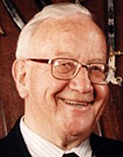The late piping scholar, historian and military music expert David Murray wrote this article for Pipe Band Magazine in 2002. It traces the earliest origins of the pipe band. Of the picture above David wrote: It shows drummers of the 1st Battalion Seaforth Highlanders in 1883. Note the size of the bass drum and that seven of the drummers carry flutes. Seven wear the medals for the 2nd Afghan War of 1878/80 plus the Kabul to Kandahar Star 1880. All seven, plus four more, wear the medal for Tel et Kebir, 1882, and the Khedive’s Bronze Star presented by the ruler of Egypt. Hard cases these but real soldiers of Queen Victoria.….

The development of the metalled road surface invented by the Scots engineer John MacAdam in the last decade of the 18th century wrought a huge difference for marching armies and their bands. Born in Ayr in 1756, John had made a fortune in New York working in his uncle’s counting house. He came home to Ayrshire in 1783 and began experimenting with a road surface made of crushed stone bound with gravel and raised to improve drainage.
It was known as the Macadamised system of road construction. With the adoption of the Macadam system it became possible for formed bodies of troops to cover long distances on foot marching in step and cadence accompanied by music. The rate of marching could also be increased and became settled at 108 to the minute, the old quickstep. This worked out at two miles to the marching hour, allowing for the regulation ten-minute halt in every hour, a rate of progress that suited the heavily laden soldiers and the marching bands as well.
Thus the requirement arose for music to cheer the marching troops on their way. Hitherto there had been two sources, the Corps of Drums and the Band of Musik as it was called. Although the Highland, and some of the Scottish, regiments had recruited pipers unofficially for years, it was not yet the custom for the pipers, one per company, to play together on parade or anywhere else, far less to play along with the drums. There is evidence that they occasionally combined to play Retreat or Tattoo as a group. It is difficult for some to accept that the Highland, that is the kilted, regiments, marched to the Corps of Drums, but it is none the less true.
The Band of Musik was very small, consisting of clarinets, flutes, trumpets and horns with a small percussion section. The necessity of playing on the march led to the invention by the mid-19th century of the valved brass instruments we see today and the consequent increase in numbers of the marching band. Now if the music was to play its part on the line of march, it had to project an audible marching beat. As has been noted, side drums were issued free, but for use on the line of march a louder drum was required. This was the bass drum, which had to be purchased at regimental expense, which meant the officers paid.
The bass drum of the marching era was a much more impressive instrument than it latterly became. It was massive. Its diameter was between 32″ to 42″ wide. The shell was 18″ deep, and sometimes more. Its tone was loud, deep, and resonant and could be heard down the whole length of the marching column, which could stretch for half a mile in the case of a battalion at full strength with transport. The bass drummer had to be sufficiently robust to carry it without tiring. When not being played it was carried by means of two swivel attachments with hand grips. It was usual for two learner drummers or drummer boys to march with the band for this purpose.
The bass drum was supplemented by the tenor drum, which first appears in a price list of 1839. The original marching tenor drum was some 24″ deep and slight-ly less in diameter. Like the bass drum, the tenor drum had no snares and was played with felt headed sticks. There is evidence that it was sometimes played with wooden sticks like the side drum, and it features in the instrumentation of some military bands of the mid-Victorian period. Two tenor drums, flanking the bass drummer or sometimes the front rank, were usual in the Corps of Drums. Two bass drums were required, one for the Corps of Drums and one for the Military Band.
The bass and tenor drummers of the Corps of Drums flourished their drumsticks while playing. The bass drummer of the Military Band contented himself with keeping a steady marching rhythm. In the later 18th and early 19th centuries the fashion was for the percussion instruments in the Military Band – bass drum, tenor drums, cymbals and triangle – to be played by black drummers dressed in exotic costumes.
They were encouraged to leap and caper about when the band played so as to draw attention to themselves and the band. The flourishing of drumsticks by bass and tenor drummers and the animal skins worn by the bass section are believed to be a relic of the tradition of the black drummers. The stage is now set for the appearance of the pipe band.
• To be continued.




















Recent Comments